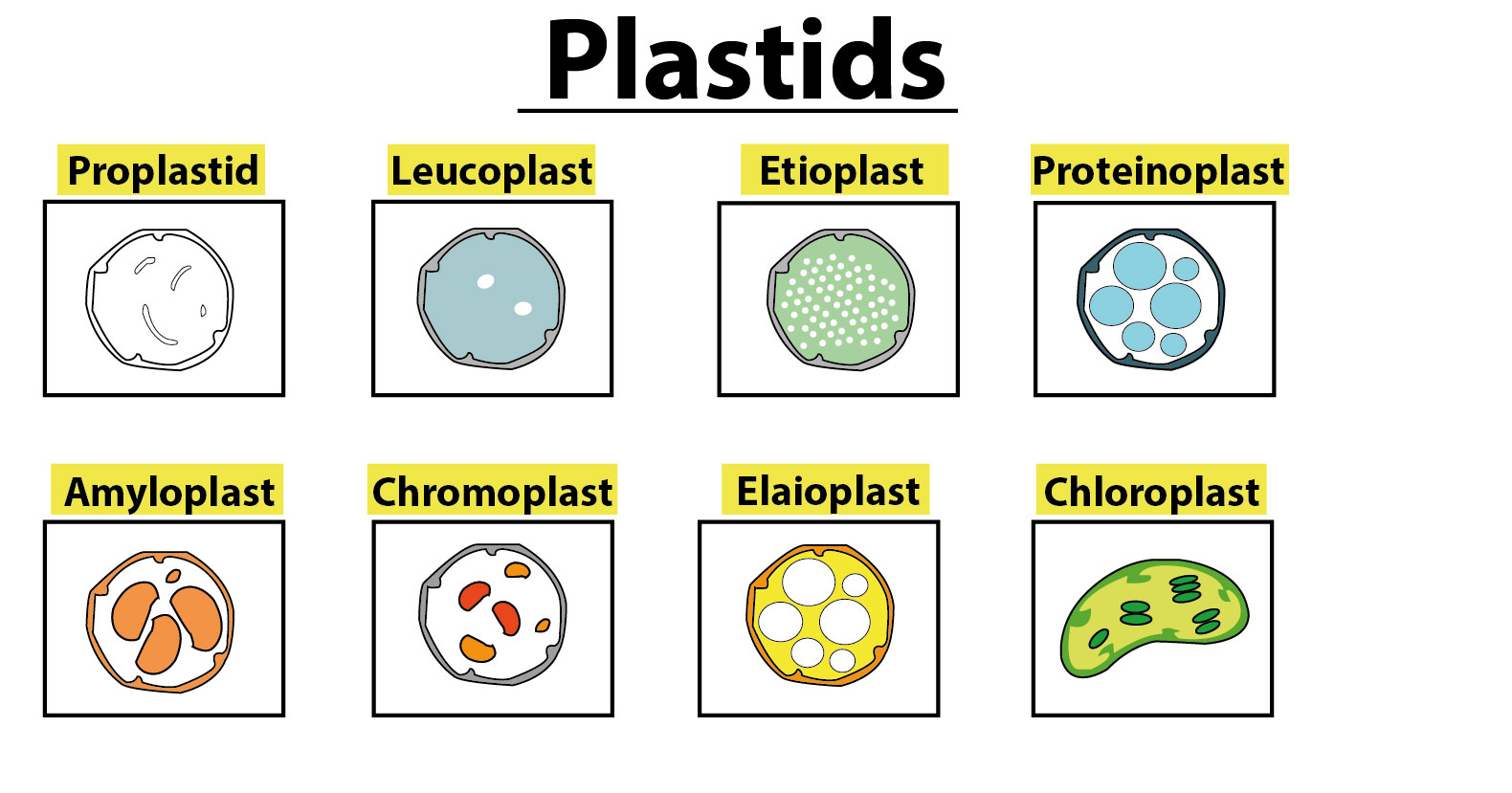
Answer
453.3k+ views
Hint: Plants cells are mostly autotrophic, it means they make their own food through the process of photosynthesis. This is possible because plants have an extra cell organelle in their cells that other eukaryotic cells do not possess.
Complete answer:
The cell organelle found only in plant cells is plastid. They are divided into many types on the basis of their function:
Chloroplast: It has green pigments stored in it and thus performs photosynthesis.
Chromoplast: It stores all other pigments except for green.
Leucoplast: Colorless plastid responsible for the synthesis of fatty acids and amino acids
Amyloplast: Storage of starch and sugars
Elaioplast: Storage of lipids and oils
Additional Information: Plastids are cell organelles that are unique to plant cells and enable plants to make their own food. Food is prepared inside the chloroplast by the process of photophosphorylation. It is the process of trapping the energy of the sun and converting it into chemical energy by forming chemical bonds in the form of glucose. This glucose was formed by raw inorganic materials such as carbon dioxide and water.
This process is further divided into two steps known as the light reaction and dark reaction. Light reaction as the name suggests requires the presence of sunlight to take place. And dark reaction depends on the products of light reaction to take place.
So, the correct option is ‘Plastid’.
Note: -Chloroplast along with mitochondria is known as semi-autonomous organelles because they function on their own and require directions from the nucleus only in some cases.
-This is because they both have their own DNA and 70s ribosomes.
-It is believed that chloroplast and mitochondria were prokaryotic bacteria who started living symbiotically inside the eukaryotic cells and thus are known as endosymbionts.

Complete answer:
The cell organelle found only in plant cells is plastid. They are divided into many types on the basis of their function:
Chloroplast: It has green pigments stored in it and thus performs photosynthesis.
Chromoplast: It stores all other pigments except for green.
Leucoplast: Colorless plastid responsible for the synthesis of fatty acids and amino acids
Amyloplast: Storage of starch and sugars
Elaioplast: Storage of lipids and oils
Additional Information: Plastids are cell organelles that are unique to plant cells and enable plants to make their own food. Food is prepared inside the chloroplast by the process of photophosphorylation. It is the process of trapping the energy of the sun and converting it into chemical energy by forming chemical bonds in the form of glucose. This glucose was formed by raw inorganic materials such as carbon dioxide and water.
This process is further divided into two steps known as the light reaction and dark reaction. Light reaction as the name suggests requires the presence of sunlight to take place. And dark reaction depends on the products of light reaction to take place.
So, the correct option is ‘Plastid’.
Note: -Chloroplast along with mitochondria is known as semi-autonomous organelles because they function on their own and require directions from the nucleus only in some cases.
-This is because they both have their own DNA and 70s ribosomes.
-It is believed that chloroplast and mitochondria were prokaryotic bacteria who started living symbiotically inside the eukaryotic cells and thus are known as endosymbionts.

Recently Updated Pages
What is the meaning of celestial class 10 social science CBSE

What causes groundwater depletion How can it be re class 10 chemistry CBSE

Under which different types can the following changes class 10 physics CBSE

Article 46 of the Constitution of India refers to the class 10 social science CBSE

Which of the following sentences has a linking verb class 10 english CBSE

Which best describes consensus historiography A A bottomup class 10 social science CBSE

Trending doubts
Which are the Top 10 Largest Countries of the World?

How do you graph the function fx 4x class 9 maths CBSE

Fill the blanks with the suitable prepositions 1 The class 9 english CBSE

Difference between Prokaryotic cell and Eukaryotic class 11 biology CBSE

The Equation xxx + 2 is Satisfied when x is Equal to Class 10 Maths

Why is there a time difference of about 5 hours between class 10 social science CBSE

Differentiate between homogeneous and heterogeneous class 12 chemistry CBSE

What is pollution? How many types of pollution? Define it

Give 10 examples for herbs , shrubs , climbers , creepers




